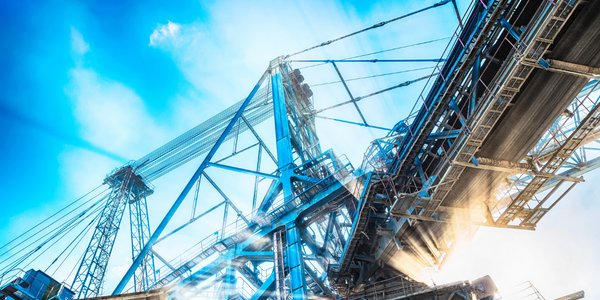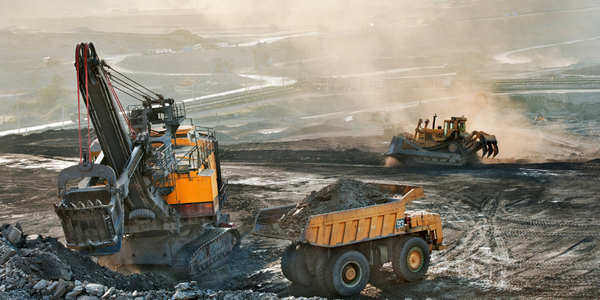Download PDF
Sandvik Automates Export Controls and Opens New Business Opportunities with E2open
Technology Category
- Functional Applications - Enterprise Resource Planning Systems (ERP)
- Functional Applications - Remote Monitoring & Control Systems
Applicable Industries
- Construction & Infrastructure
- Mining
Applicable Functions
- Logistics & Transportation
- Procurement
Use Cases
- Regulatory Compliance Monitoring
- Supply Chain Visibility
- Track & Trace of Assets
Services
- System Integration
- Software Design & Engineering Services
The Challenge
As a global industrial group, Sandvik has approximately 600,000 trading partners and over 3 million shipments and orders per year that require compliance screening. The challenges of properly managing such volume and complexity are further intensified for divisions that work in highly regulated fields with fast-changing restrictions and requirements. To manage its trade compliance, Sandvik traditionally depended on manual processes and, in some of its companies, on a restricted party screening tool that had limited functionality. The manual and highly fragmented process was time-consuming and unreliable, particularly in light of Sandvik’s dynamic compliance environment. For example, new European Union (EU) regulations regarding trade with sanctioned countries meant that Sandvik had to review and assess all its trading relationships – a painstaking manual process that had to be implemented across multiple export centers. As its markets changed, Sandvik found that it was increasingly facing highly regulated and complex trade transactions that required more comprehensive compliance evaluation. Uncomfortable with its potential exposure, Sandvik decided to implement a formal trade compliance process. It needed to be able to centralize its database of all relevant information and institute automated processes for ensuring global compliance. Additionally, on a global scale, Sandvik realized that it was not fully exploiting potentially favorable trade regimes. With better, formalized export controls processes, Sandvik would be able to expand business with countries that it had not traditionally considered, and thus gain a new competitive edge.
About The Customer
Headquartered in Sweden, Sandvik® is a high-technology engineering group that develops and supplies a wide range of tools, equipment and services in five business areas: Sandvik mining, Sandvik construction, Sandvik machining solutions, Sandvik materials technology and Sandvik ventures. With representation in more than 130 countries, the company has 50,000 employees and annual revenues of more than $14 billion.
The Solution
Sandvik selected E2open’s Export Management application, a modular and scalable solution that contains trade compliance regulation information for over 180 countries and additional regulatory bodies. “The E2open solution stood out for its global coverage, its hosted solution architecture, and the comprehensiveness of its trade content,” says Mattias Lövensjö, Manager, Group Trade Compliance at Sandvik. “Scalability was also important to us as we wanted to offer this solution to the whole Sandvik group.” In the initial stage, the trade compliance functions and processes in E2open Export Management were implemented in Sandvik’s Mining and Construction business areas, focusing first on the regions with the highest perceived compliance risk. Rollout of the solution then expanded to Sandvik Mining and Sandvik Construction worldwide. The implementation included integration with legacy enterprise resource planning (ERP) systems, including modification of the ERP to enable efficient and automated responses to alerts and blocks signaled by E2open Export Management.
Operational Impact
Quantitative Benefit
Related Case Studies.

Case Study
IoT System for Tunnel Construction
The Zenitaka Corporation ('Zenitaka') has two major business areas: its architectural business focuses on structures such as government buildings, office buildings, and commercial facilities, while its civil engineering business is targeted at structures such as tunnels, bridges and dams. Within these areas, there presented two issues that have always persisted in regard to the construction of mountain tunnels. These issues are 'improving safety" and "reducing energy consumption". Mountain tunnels construction requires a massive amount of electricity. This is because there are many kinds of electrical equipment being used day and night, including construction machinery, construction lighting, and ventilating fan. Despite this, the amount of power consumption is generally not tightly managed. In many cases, the exact amount of power consumption is only ascertained when the bill from the power company becomes available. Sometimes, corporations install demand-monitoring equipment to help curb the maximum power demanded. However, even in these cases, the devices only allow the total volume of power consumption to be ascertained, or they may issue warnings to prevent the contracted volume of power from being exceeded. In order to tackle the issue of reducing power consumption, it was first necessary to obtain an accurate breakdown of how much power was being used in each particular area. In other words, we needed to be able to visualize the amount of power being consumed. Safety, was also not being managed very rigorously. Even now, tunnel construction sites often use a 'name label' system for managing entry into the work site. Specifically, red labels with white reverse sides that bear the workers' names on both sides are displayed at the tunnel work site entrance. The workers themselves then flip the name label to the appropriate side when entering or exiting from the work site to indicate whether or not they are working inside the tunnel at any given time. If a worker forgets to flip his or her name label when entering or exiting from the tunnel, management cannot be performed effectively. In order to tackle the challenges mentioned above, Zenitaka decided to build a system that could improve the safety of tunnel construction as well as reduce the amount of power consumed. In other words, this new system would facilitate a clear picture of which workers were working in each location at the mountain tunnel construction site, as well as which processes were being carried out at those respective locations at any given time. The system would maintain the safety of all workers while also carefully controlling the electrical equipment to reduce unnecessary power consumption. Having decided on the concept, our next concern was whether there existed any kind of robust hardware that would not break down at the construction work site, that could move freely in response to changes in the working environment, and that could accurately detect workers and vehicles using radio frequency identification (RFID). Given that this system would involve many components that were new to Zenitaka, we decided to enlist the cooperation of E.I.Sol Co., Ltd. ('E.I.Sol') as our joint development partner, as they had provided us with a highly practical proposal.

Case Study
Splunk Partnership Ties Together Big Data & IoT Services
Splunk was faced with the need to meet emerging customer demands for interfacing IoT projects to its suite of services. The company required an IoT partner that would be able to easily and quickly integrate with its Splunk Enterprise platform, rather than allocating development resources and time to building out an IoT interface and application platform.

Case Study
Bridge monitoring in Hamburg Port
Kattwyk Bridge is used for both rail and road transport, and it has played an important role in the Port of Hamburg since 1973. However, the increasing pressure from traffic requires a monitoring solution. The goal of the project is to assess in real-time the bridge's status and dynamic responses to traffic and lift processes.

Case Study
Underground Mining Safety
The goal was to produce a safety system to monitor and support underground mining operations; existing systems were either too simple (i.e. phone line) or overly complex and expensive, inhibiting deployment, and providing little-to-no support in event of an accident. Given the dangerous nature of the mining work environment and the strict regulations placed on the industry, the solution would have to comply with Mine Safety and Health Administration (MSHA) regulations. Yet the product needed to allow for simple deployment to truly be a groundbreaking solution - increasing miner safety and changing daily operations for the better.

Case Study
Mining Firm Quadruples Production, with Internet of Everything
Dundee Precious Metal’s flagship mine, in Chelopech, Bulgaria, produces a gold, copper, and silver concentrate set a goal to increase production by 30%. Dundee wanted to increase production quality and output without increasing headcount and resources, improve miner safety, and minimize cost.

Case Study
Fastenal Builds the Future of Manufacturing with MachineMetrics
Fastenal's objective was to better understand their machine downtime, utilization, quality issues, and to embrace cutting-edge manufacturing technology/process improvement capabilities to bring their team to the next level. However, there was a lack of real-time data, visualization, and actionable insights made this transition impossible.




